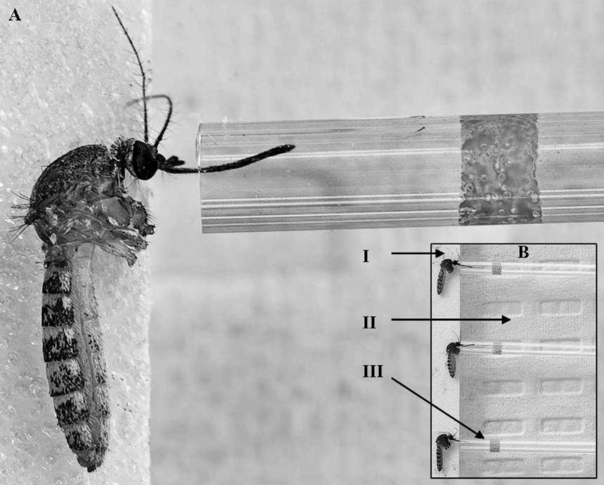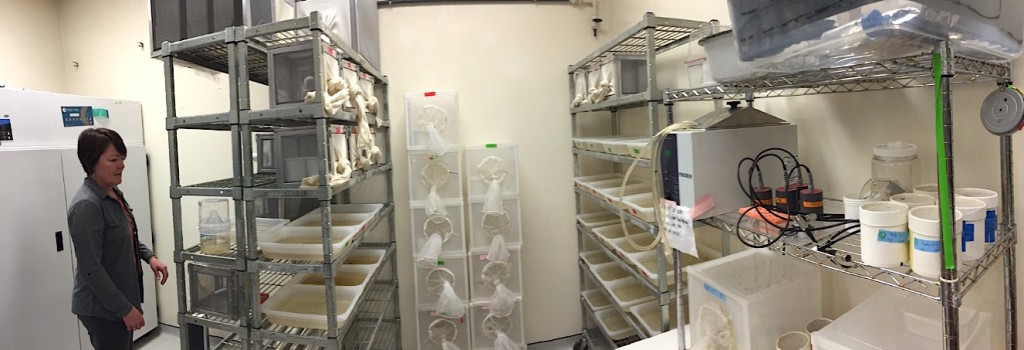Spitting Mosquitoes: A Hedge Against Zika?
NEW ORLEANS, LOUISIANA — It’s no longer a question of whether a virus like Zika will spread in the United States. It’s a question of when. Understanding the biology of the mosquitoes that carry the disease, then, is key to understanding how a virus like Zika spreads — and how it can be stopped.

A key component to the effort is improved testing for the virus in mosquito populations themselves. And for laboratories with the time, funding, and expertise, there’s at least one surefire way to do that: Get the insects to spit into tubes.
Scientists know, after all, that after a mosquito feeds on infected blood, it takes between two and ten days for a virus to infect the insect, depending mostly on temperature, though some mosquitoes may never become infected. If the virus does infect the mosquito, it takes some time for the virus to travel from the gut to the salivary glands. And then it takes a little longer for that saliva to collect enough virus to make the mosquito infectious to humans.
“There’s a fine line between infectious and infected,” says Dawn Wesson, a mosquito expert in the Department of Tropical Medicine at Tulane University in New Orleans. Wesson works with the specific type of mosquitoes known to transmit Zika, chikungunya and dengue. “Sometimes you can actually get infection of the mosquito that never reaches the salivary glands,” says Wesson.
Those mosquitoes don’t pose an immediate threat, she says. They may become infectious within days, but they’re not as dangerous as mosquitoes whose saliva is teeming with the virus. And knowing how a mosquito becomes infected could help scientists to breed insects that won’t pass on viruses, or to develop repellants that can help to block virus transmission.
Standing in her mosquito rearing facility at her laboratory in downtown New Orleans, Wesson explains the different ways scientists can test for virus in a mosquito. Most mosquito tests call for grinding up the entire insect and then extracting genetic material. But that homogenizes every body part and, unfortunately, doesn’t distinguish between a live virus and sheared, inactive viral RNA. Better to remove the mosquito’s head and test that on its own, says Wesson, though that still could yield false positives from pieces of virus that might never have caused infection.
Better still: Keep the mosquitoes alive and induce them to salivate into a small vial. To do this, a female mosquito is chilled and its proboscis is inserted into a thin tube containing oil. Salivation is induced by rubbing their bodies with pilocarpine, a stimulant used in humans to treat dry mouth.

Dawn Wesson standing in her mosquito lab at Tulane.
Though this salivation technique has been used for decades by scientists in France, the United States, and Brazil, not all mosquito testing laboratories use it. Why isn’t it the gold standard? It’s expensive, requires additional expertise, and most mosquito control boards are not set up for it. Rather, in the interest of rapid turnaround times and because they deal with high mosquito volume, those laboratories homogenize the bugs and run quick genetic tests.
Still, improving and expanding the use of this sort of precision testing could help scientist to determine more quickly and accurately whether viruses are actually being picked up by mosquitoes and, more crucially, whether they’re infectious. Armed with that knowledge, experts stand a better chance of thwarting the next mosquito-borne epidemic.
The mosquito immune system is a growing field of research, says Dina Fonseca, an entomologist at Rutgers University — and it’s one that is particularly important in an age of virulent diseases like Zika, “In many arboviruses such as dengue, chikungunya, and Zika, a few virion are enough to infect a human,” Fonesca says. “So as long as some virus gets to the salivary glands, the mosquito is infectious.”









